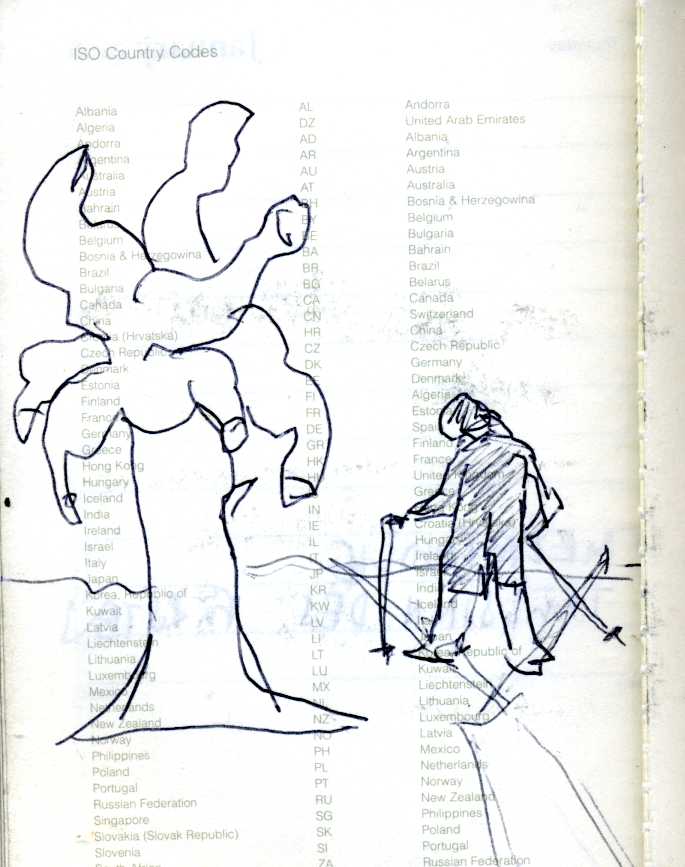Zum Inhalt springen
Gegen einen Pinto willst du dich beflecken? Ann Cotten – Monika Rinck – Sabine Scho


… .. .. …. it was a detail from Jan Brueghel the Elder’s A Woodland Road with Travelers, one of Brueghel’s small and intimate, perspectival paintings of Dutch peasants in a landscape. A Woodland with Travelers shows men and women with their children on a journey, carrying burdens and leading hobbled and swaybacked draft animals that draw broken-down carts piled and overspilling with household belongings and more people, the cart’s drivers and, presumably, the very old who cannot walk over the stones and brambles and fallen leaves and the tree roots that stick out everywhere from the forest floor – a caravan of people making their way inexorably along a road that never was a road, underneath old trees that bend down over the heads of the people, blotting out the sund. Deep blue sky, three or four dark birds, the forest’s edge, and one or two painted clouds are apparent in the immediate distance. In the lower left foreground, beneath a tree, lies the bleached, intact skeleton of a fallen horse. The animal’s skull is huge and, as is true of everything in Brueghel’s work, observantly painted. Two finely dressed men – aristocrats? royal messengers? properous thieves? – ride on horses past the skeleton, through the trees and into the woods. Do they notice the bones of the fallen animal? Is a dead horse cause for concerns? Where are the men going? What danger are they riding toward? The pilgrims with their overload carts, on the other hand, mainly travel away from the viewer; and there is a feeling that these good people have left their homes and whatever blood ties exist for them. They plod with their loads toward the break of the forest, toward a town or a village with its church steeple faintly discernible, rising up at the vanishing point of the horizon. A few travelers, and a small black, brown, and white dog have stopped to sit and rest beneath the trees in the lower right corner of the scene. The dog peers back along the road, back into the dark woods toward unseen things that have been abandoned or lost in the recent past; and the dog gazes, as wel, into the eye of the viewer standing before the painting. Caravans proceed toward and away from the town. The wealthy horsemen ride heedlessly into the forest. The mood of the painting is neither happy nor sad, frightening nor liberating; it is all these things.
If you look at the painting, you will see the dog staring out at you. If you move to the left or the right the dog’s eyes will find you- exactly as the eyes of figures in paintings are expected to do.
The dog connects the people in the painting to the world outside the painting. It is as if Brueghel’s peasants have been cast out of the living world in order to wander through the painting… … …
from: the verificationist